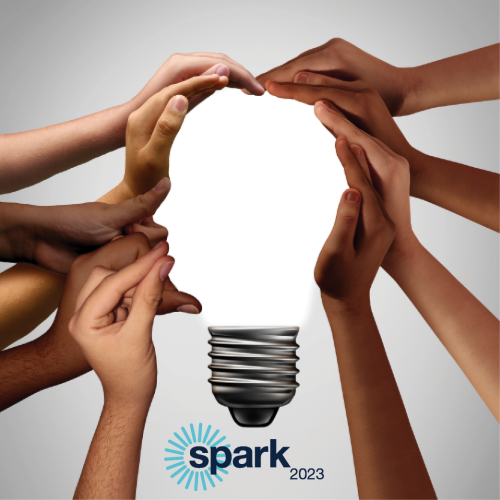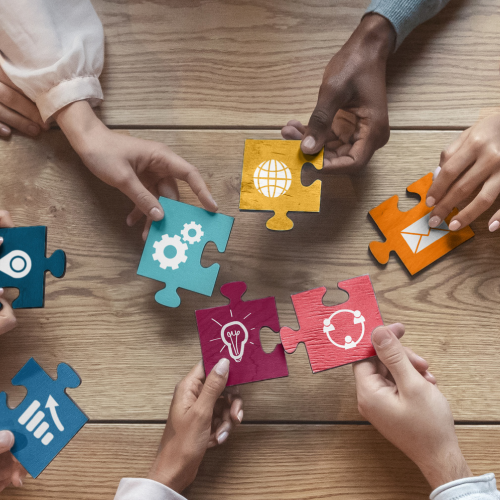Brain Science and Trauma-Informed Approaches
Hardwired for Fear and Connection: How Our Brain Impacts Our Equity Journeys
It is Brain Awareness Week, a global campaign to share the impact of brain science on our everyday lives, and an opportunity to explore how brain science concepts impact our trauma-informed and equity, diversity, and inclusion (EDI)-focused work. We know we cannot be trauma-informed without being antiracist. But our efforts at this intersection remain siloed. Within human services organizations, this work is often defined and carried out by separate trauma-informed and antiracist committees and can be hampered by limited understanding of how to integrate the two at the individual and organizational levels.
At the intersection of EDI and brain science we wrestle with trauma-informed concepts, such as power differentials, psychological safety, difficult conversations, implicit bias, vulnerability, and healing. With a stronger understanding of brain science, we strengthen our capacities for mindfulness and cultural humility, develop our own racial identity, boost our self-regulation skills and compassion for self and others, and advance a healing journey that includes our whole body.
Translating Knowledge into Action
One opportunity for deep impact is rooting all EDI work in a foundation of basic brain science concepts. The brain impacts our thoughts, feelings, and behaviors during every second of our day. Our brains are designed to keep us safe, constantly monitoring our surroundings and putting up “fight or flight” barriers when we experience things that are new or different. Yet, we are also social beings, craving connection and belonging. The brain’s primary function of keeping us safe can sometimes conflict with our human need to connect. This conflict impacts our EDI efforts, our ability to bridge differences, and our efforts to heal from trauma, especially the trauma of white supremacy. With a deeper understanding of basic brain science concepts, we become more aware of opportunities and strategies to quiet our brain’s safety function so we can connect, integrate our trauma-informed and equity initiatives, and advance our personal and organizational EDI efforts.
Resmaa Menakem, therapist, trauma specialist, and author of My Grandmother’s Hands and The Quaking of America, teaches that healing from centuries of racial trauma for all bodies requires an embodied approach, one that recognizes the interconnectedness of mind, body, and spirit. Today, white supremacy is our operating system—it’s the air we breathe, the water we drink, and the foods we eat. It’s embedded in our institutions and social contracts. Most of all, though, white supremacy lives in our bodies, which is why Menakem uses the term, “white-body supremacy.”
Menakem teaches that white body supremacy, “and all the claims, accusations, excuses, and dodges that surround it — are a trauma response … and we need to heal from it by starting with our bodies.” Robin DiAngelo, author of White Fragility: Why It’s So Hard for White People to Talk About Racism notes, “White Supremacy is not rational, and we don’t heal it with our intellect alone.”
So, what does this mean for our EDI and trauma-informed efforts? Here are two strategies that incorporate these concepts and get us thinking about making changes in our daily practices.
Regulate, Regulate, Regulate
Regulation is the basic strategy for calming the defensive and reactive parts of our brain so that we can access the more receptive, open, learning parts. Focused breathing, taking a short walk, listening to music, using a standing desk are all ways to keep our mind clear and focused. There are dozens of regulation strategies to use in the work setting, both for large groups and individuals.
Dr. Bruce Perry’s sequence of engagement – regulate, relate, reason – is a simple practice for effective communication that starts with regulation. The steps work in this order:
- Regulate: First, ensure we are calm and centered before we start talking. You and your colleagues can use regulation strategies that work for you.
- Relate: Next, connect human to human. Ask a colleague, “What are you looking forward to?” “What are you worried about?” “What are you thinking about today?”
- Reason: Finally, move to the content of the conversation – to do lists, a pending project, or complex equity dynamics in a work relationship.
When we do this at every meeting, supervision session, and human interaction, especially the hard ones we avoid, we have greater success in our communications. We move closer to achieving the EDI and trauma-informed outcomes we strive for—candid conversations, individual and organizational accountability, and inclusive environments.
Somatic and Embodied Practices
Somatic means related to the body. Embodied signifies feeling at home and safe in our body, an increased ability to be in our body in the present moment and to feel all its sensations. Somatic embodied practices build our awareness of our brain’s safety functions and help us to quiet those strong impulses, which strengthens our ability to connect and belong.
It turns out that somatic, embodied practices are critically important in our EDI work. Resmaa Menakem’s Somatic Abolitionism teaches us that, “Race has its unique charge, texture, weight, and speed. The ability to hold and work with these energies isn’t inborn. It needs to be acquired through effort and practice.” Somatic abolitionism is living, embodied antiracist practice and cultural building—a way of being in the world.
Menakem suggests healing from white body supremacy starts with the practice of five anchors:
- Settle the body
- Notice the sensations without reacting
- Accept the discomfort and sit with it
- Remain present and experience the uncertainty
- Safely discharge any energy that remains
Menakem teaches that we can strengthen our muscles for practicing these five anchors through repetition of cultural somatic practices including grounding, orientation, movement, touch and pause.
Using somatic and embodied practices are not an overnight fix. Healing from white supremacy, for all bodies, is a lifelong journey. But understanding that healing starts by focusing on our bodies puts us on a new path to exploring our EDI work and integrating it with our trauma-informed efforts.
The needs of human services staff and complexities of our work require us to embrace new ways of being at work. Embedding brain science concepts into our daily interactions could have many benefits. The good news is there are countless ways, as individuals and organizations, to prioritize brain-friendly and healing practices. When we do this, we will help settle our bodies and brains, bridge differences, increase connection, improve equity and accountability, and truly integrate our trauma-informed and equity-focused efforts to reach the outcomes we are so hungry to achieve. The biggest challenge may be taking the first step to get started.
Next Steps in Applying Brain Science to Your EDI Efforts
To learn more about the brain and how it advances our equity efforts, join our upcoming learning series – Hardwired for Fear and Connection: The Intersection of Brain Science and Equity – which starts March 19. In this three-part series we will focus on the intersection of brain science and EDI and its application for our daily work. We will build shared understanding of foundational brain friendly and EDI concepts and consider how our daily EDI efforts are interrupted by our key brain functions often outside of our consciousness. Additionally, we will share concrete strategies for increasing self-awareness, quieting our lower brains, having difficult conversations, understanding power differentials, and increasing felt safety in our work setting, and advancing somatic-embodied approaches.
Other ways that Social Current can help with our EDI and trauma-informed journeys:
- Consultation: Learning collaboratives, one-on-one consultation, and learning series offer specially designed experiences to create brain-science informed partnerships with staff that improve engagement, retention, and communication; focus on sustainable culture change; and reframe challenges as opportunities to grow and become stronger.
- Knowledge & Insights: The Knowledge and Insights Center disseminates a robust collection of research and resources, including curation on brain science research and applications. Services are available through the Social Current Impact Partnerships as well as separate subscriptions to the Resources Portal and custom research projects.
- Learning: Through the Learning Exchange, national experts explain brain science research and give practical recommendations for implementing and sustaining practices that support employees, improve performance, and increase the success of organizational outcomes. Examples include Core Strategies for Workforce Well-Being and Resilience.



